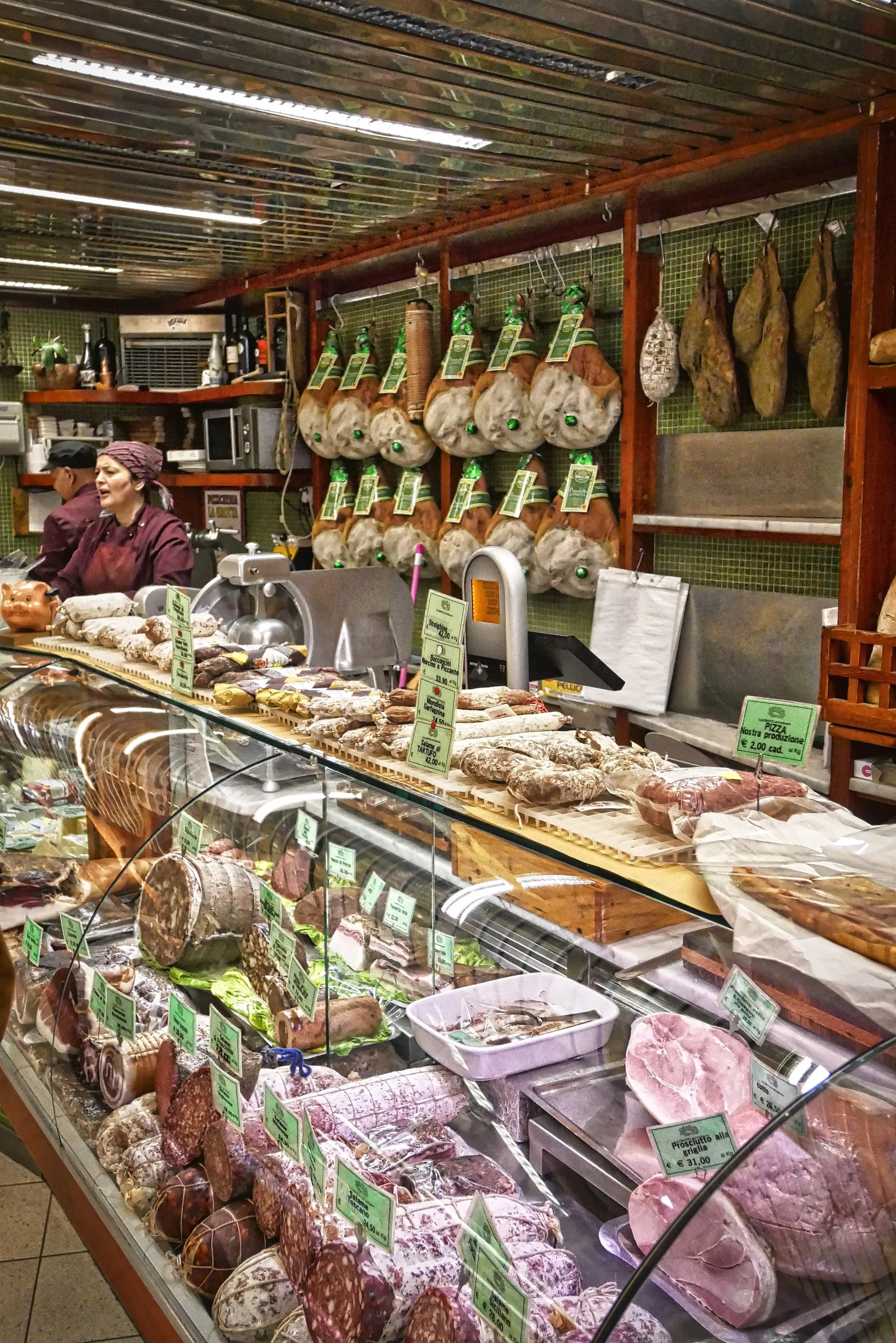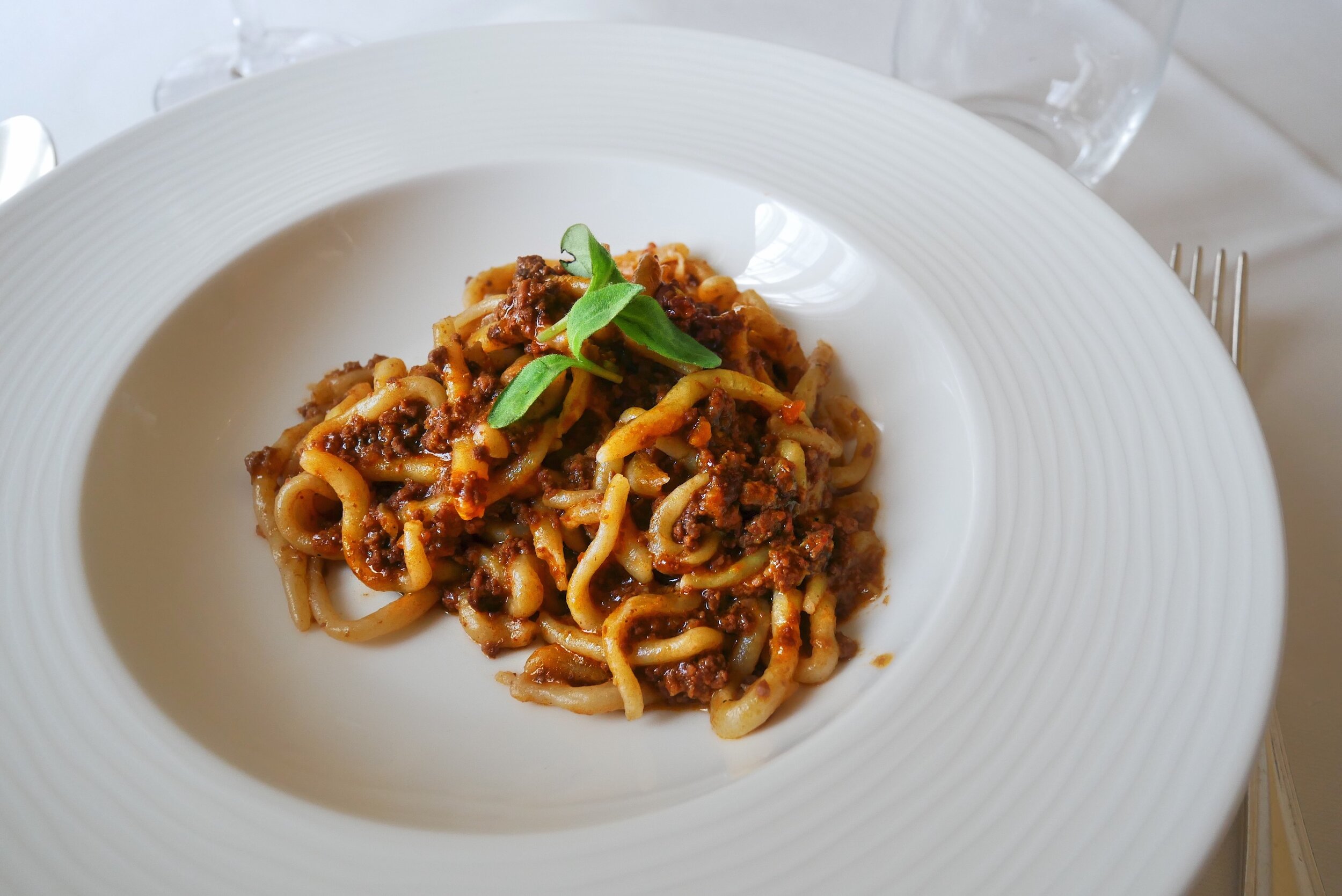Why the Food of Tuscany has Become World-Renown
Classical landscapes, seas full of marine life and popular coasts, high hills, wide green valleys, famous beef cattle and special cheeses, all fused with an exciting new way of cooking and a predominance of ingredients from the surrounding countryside.
I could be talking about South West England, but in this food article I am focussing on Tuscany - partly because of all the many similarities and also because the average Italian cook (professional or amateur) embraces his or her region’s traditional dishes and raw ingredients just that little bit more enthusiastically than we do here.
The people of that long thin Mediterranean country are world-famous for it. Their adherence to local tradition, to the recipes their mothers and grandmothers followed, to the ingredients the come from the nearby valley or mountainside, is both fascinating and exciting to behold.
The Italians really do take localness a lot further than we do - although to counter that you could argue that we embrace the new and the exotic more readily than them. Some chefs might dispute this, but can they tell the difference between butter made from milk produced near the coast and the stuff made high in the hills? The Italians can do that with their olive oil.
Last weekend I was fortunate enough to be in Tuscany talking to two professional chefs - both passionate about the cuisine that you will find in an area stretching from the coast near Pisa, right up to the mountains towards Florence.
And I was surprised by the similarities that exist between the Tuscan region and our Westcountry peninsula - and by the differences I’ve already hinted at. For example, both Guido Lotti, executive chef at the amazing Grotta Giusti hotel (www.grottagiustispa.com) 40 miles inland, and Umberto Toscano who holds the same position at the historic and lavish Bagni di Pisa hotel (www.bagnidipisa.com) just a few miles from the coast, were able to wax lyrical about village specialities from where they were born and bred. Dishes which they still cook (sometimes with their own twist) in their upmarket hotel restaurants today
It was also Guido and Umberto who explained how olive oil will vary depending on the geographic location of the olive groves. So where they might steer in the direction of a dish from their immediate locale, they would select the right olive oil depending on its geographic provenance.
An oil from a grove near the sea, for example, will be a lot lighter and more fragrant than one produced in the hills. The lowland oil would be much better drizzled over a fillet of fish or stirred last minute into a seafood soup. The latter will be stronger and more peppery, so you might use it in a daub of wild boar or with some other kind of game.
Which brings us to the recipe we publish today. I “collect” fish soups wherever I go in the world and so have tasted some of the best, and worst. Not surprising to me is that the examples from Italy are superb, and I do recommend trying this one.
By the way, I often ask myself why we have no real tradition for a seafood soup in a fish-rich region like the Westcountry? If you go to places like the Tuscan coast, or to Marseille not far to the west where they make the famous bouillabaisse, what you learn is that these dishes were flavoursome blasts of nutrition made by fisherfolk who wanted to feed themselves. They were created from the bits and bobs - the odd species in the catch that no one wanted and the teeming nameless tiny fingerlings caught in the net - all left unsold after morning market.
Old bull ring square in Lucca
Why chuck ‘em away when you could bung the lot into a big pan and feed the family?
In the recipe below you get a hint that this soup is a peasant dish when you see that there is a big slice of bread going into every bowl. Stale bread at that (or toasted).
“This fish soup was made by fishermen as a result of them not selling certain fish in their catch,” I was told by Umberto. “A lot of the fish don’t even have names most people will know - they’re just the little fish. The poor people will buy these or the fishermen will have them - and put them into a pot with tomato soup. and that’s it.
“We have interpreted this traditional soup in a lighter way,” he went on. “The regional one should have complete fish in it, not filleted - also it was cooked for much longer.
“The sauce is prepared before the actual fish soup - before we put the fish in. It is a tomato sauce with some fish in it like calamari - and garlic or chilli to give it flavour. You pass that though a sieve or liquidise it. It is tomato sauce plus… And then you put in the fish you’ve chosen - so you work with the fresh fish that are coming in every day. If you come here in two months time it might be different. But there will be four or five different fish in it - sea-bass and so on.
Umberto added: “You can find this sort of fish soup in almost every part of the coast of Italy. They are quite similar - but they can be different when it comes to using fresh tomato or not. Maybe it will be white without tomato. There is always bread but it’s not always at the bottom of the bowl - sometimes you will serve it separately with garlic grated on it to put on top. It is there to give the soup a bit more body.”
Up in the hills, Guido Lotti who was telling me about mountain food.
“My grandmother was cooking in our home and it was very very good, and the same with my mother. When I was four I made my first omelette and burned my finger,” he laughed. “The food in Tuscany is simple and non-complicated. Ingredients are pure and simple and natural and also the way we cook the food is simple. So you can really understand and feel the original quality of the food you are eating.
“We have a lot of different oil - up in the mountains it is stronger - good with wild boar or wild rabbit. Down at the coast it is more floral and is not too strong, so it is better with the fish. We have a lot of good vegetables - it is perfect for them - we have a lot of sun. Tuscany is a micro-world all of its own - a place with different temperatures from the coast to the hills. So you get the complete offer.
“Very typical and simple is the pappa al pomodoro - a soup where we use old bread with basil and tomato and fresh vegetable stock, all cooked very slowly together. We eat it in winter and summer - in winter hot, but often summer we have it cold with lots of olive oil.
“Ribollita is another vegetable soup with lentils and beans - two or three different types. We grill the bread last and put together the soup with cavilo nero in its season. A lot of the dishes we make here in the hills are all about slow-cooking.”
Thinking about it I have never met anyone who doesn’t like Tuscan food, vegetarian or otherwise. And the fact that it’s just a quick two hour flight from the UK means that it’s not too big a journey to pick up some authentic tips in a landscape and environment that’s not a million miles from our own.
Light “Cacciucco” as made by chef Umberto Toscano of the Bagni di Pisa Hotel
Ingredients (per 4 persons)
For the fish stock
150gr. celery
150gr. white onion
100gr. fennel
2 cloves of garlic
1 lemon
fishbones from turbot, sea-bass etc, without head
1.5 ltr cold water or with ice
20 grm extra virgin olive oil
For the cacciucco sauce
500 gr. peeled tomatoes
4 cloves of garlic
1 red chilli
parsley
cuttlefish and squid
100 gr. white wine
20 gr. extra virgin olive oil
500 gr. fish stock
10 gr. salt
For the dish
120 gr. fillets of sea-bass
120 gr. steamed octopus (40 min per kg.)
120 gr. fillets of grouper (or other firm fleshed white fish)
120 gr. cuttlefish
120 gr. squid
4 large prawns
120 gr. fillets of turbot
40 mussels
40 small clams
1 clove of garlic
500 gr. fish stock
10 gr. salt
4 toasted slices of bread rubbed with garlic
Method
For the fish stock:
Wash the fishbones of turbot, sea bass etc. Sauté with oil, garlic, celery, onion and fennel, add any fish scraps you have to hand, sprinkle with lemon. Cover with very cold water and cook over low heat for 30 minutes, skimming if necessary. Then filter it through the strainer.
For the cacciucco sauce:
Fry in a pan chopped garlic with chilli pepper, parsley and add the chopped flesh of the squid and/or cuttlefish. Add white wine and let evaporate, after add the fish stock, the peeled tomatoes and cook for 40 min. Add salt to your taste. Then filter through the vegetable mill and finally to the thin strainer.
For the dish:
Put in a pan the cacciucco sauce and add the fillets as follow: 30gr each of grouper (or other firm fleshed white fish), octopus, turbot, sea-bass, cuttlefish and squid. After 10 min of cooking add prawns, mussels (cleaned) and finally small clams. Cooked for 10 min.
Serve it in a dish with a slice of roasted bread rubbed with garlic. Add parsley.





















